Parsnip is a very healthy vegetable that is easy to grow. It will diversify the winter table, add spice to the dishes. To taste this wonderful root vegetable similar to carrots or root parsley, has a spicy aroma. It can be eaten not only fresh, but also fried and boiled.
Material Content:
Parsnip vegetable: the nuances of growing
Parsnip should be sown in spring as early as possible. At the end of the first decade of April, seeds are already sown in open ground, since this cold-resistant plant tolerates short-term frosts well. Parsnip seeds are planted even in the fall - they winter in the soil and sprout in the spring.
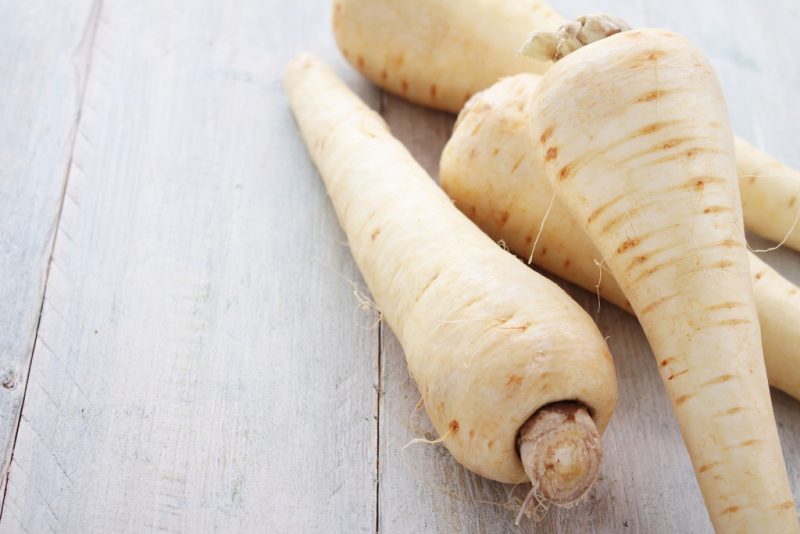
You can grow parsnips through seedlings in the northern regions of Russia. For this, seeds begin to be planted in containers in February or the first decade of March.
Among the variety of varieties, plants are selected taking into account the characteristics of the site. If the arable layer is small, it is better to plant varieties that have not elongated, but rounded root crops.
How to grow parsnip seedlings
It is necessary to use fresh seeds that have been stored for no more than a year, because they quickly lose their germination. From quality raw materials, the first sprouts after sowing can appear in 20 to 30 days.
When growing seedlings indoors, each seedling needs a separate container. For planting, it is convenient to use peat pots, which can then be dug in the garden without violating the integrity of the root system of seedlings.
In order for the seeds to sprout faster, they can be prepared before sowing. The soil also affects the quality of the seedlings - it should be light and fertile.
- Universal soil with neutral acidity is poured into each pot, moistened and planted 2 to 3 seeds.
- From above they are covered with a small layer of soil.
- Cover the landing tanks on top of the film.
- Do not forget to moisten from the spray gun and ventilate the planted seeds.
Seed preparation before planting
To accelerate the germination of seeds before sowing, it is recommended to soak them for a day, changing the water 2 or 3 times, and then sowing in moist soil. You can treat them with a growth stimulator before sowing. Preliminary preparation of seed allows you to get the first seedlings after 2 weeks.

In the autumn sowing of seeds they are not pre-soaked before. Sow on frozen ground in the furrows. If you plant seeds before the onset of frost, shoots will appear in the fall, and it will not work to grow crops for next year.
Soil requirement and sowing
Soil for parsnip requires light, sandy loam. Fertile loams and cultivated peat bogs are also suitable. The earth must be well loosened.
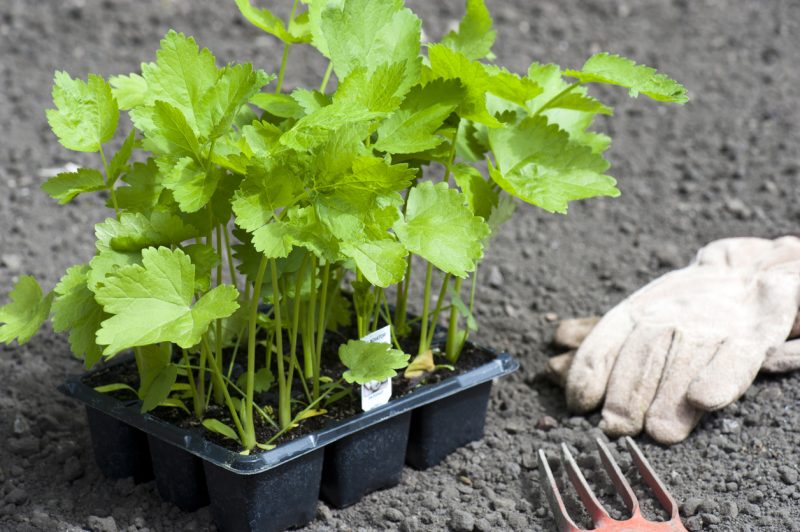
If the soil is heavy and clayey, root crops will grow ugly and small. He does not like parsnip stagnation of water in the soil and the increased acidity of the environment.
- Plowing before planting seedlings or sowing seeds should go to a depth of at least 30 cm.
- Sowing seeds is carried out to a depth of two centimeters.
- The seeds are large, so it is easy to determine the correct distance when sowing. They are laid out in furrows at a distance of about ten centimeters.
If sowing occurs in the garden, shoots after the appearance of leaves are thinned out so that they do not interfere with each other's growth.
Seedling Care
Parsnip seedlings in open ground thin out, loosen the soil in the aisle. Plants are regularly watered, weed and weed.
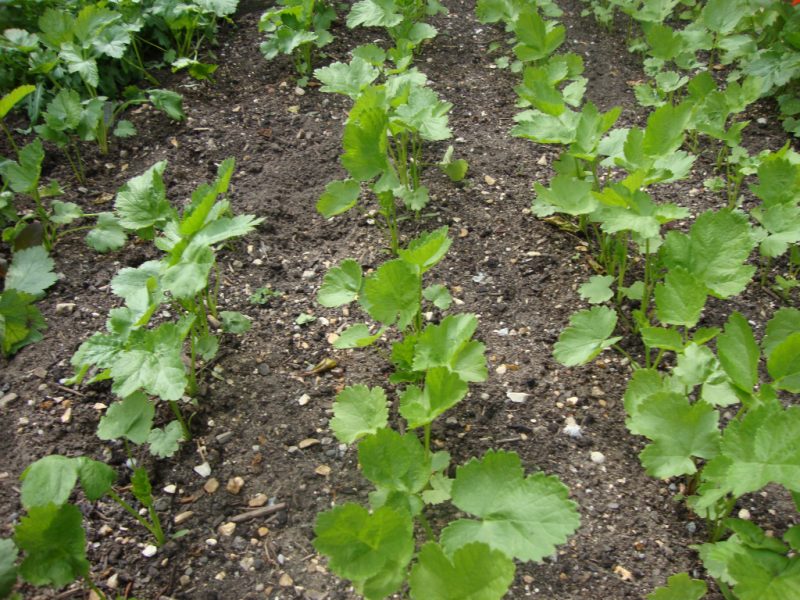
Parsnip leaves can leave small burns on the hands due to the presence of burning essential oils in them, so it is advisable to carry out weeding and caring for the plant with gloves.
If seedlings are grown indoors, it is necessary to provide good lighting by organizing additional illumination in the first two weeks of seedling development. Growth stimulants or complex fertilizers are added to water for irrigation. Seating glasses should have drainage holes so that moisture does not stagnate after watering.
Read also:parsnip plant
Planting seedlings in open ground
Parsnip does not tolerate transplanting, so it is advisable to sow its seeds two in seedlings. Parsnip seedlings are planted on the bed at the age of about 1 month, trying not to damage the root. Bushes planted at a distance of 20 cm from each other.
A vegetable loves solar beds, even in a small shade, productivity decreases by 30 - 40%.
Outdoor Parsnip Care
Parsnip cultivation is more successful on fertile land. The best predecessors for the plant are representatives of nightshade and cruciferous vegetable crops, organic fertilizers for which were applied 2 years before the planting of parsnip.
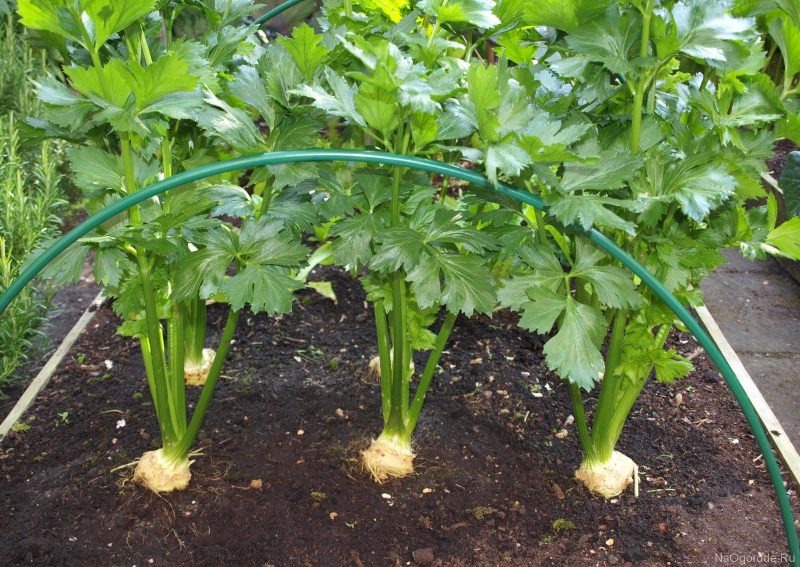
Caring for the parsnip is simple - it differs little from growing other root crops and comes down to thinning seedlings, loosening the soil, weeding, top dressing and watering.
You can get seeds for further cultivation of the crop on the site, from root crops that have wintered in the ground. The seeds ripen in early August, they are removed after yellowing the umbrellas, receiving from the bush about 10 g of seeds.
Watering Rules
Abundant watering is needed, but the parsnip cannot stand stagnant water. Over the summer, the plant needs 5 or 6 waterings.
Do not allow the soil to dry out on hot summer days. On 1 m2 of beds should leave at least 10 liters of water. After watering, the soil must be loosened and light hilling of the plants made.
Fertilizer and fertilizer
When planting root crops in open ground in the first year, it is undesirable to introduce organic fertilizers and mineral fertilizers, which contain a lot of nitrogen - root crops do not like it.With an excess of nitrogen, parsnip grows more leaves than a valuable fruit.
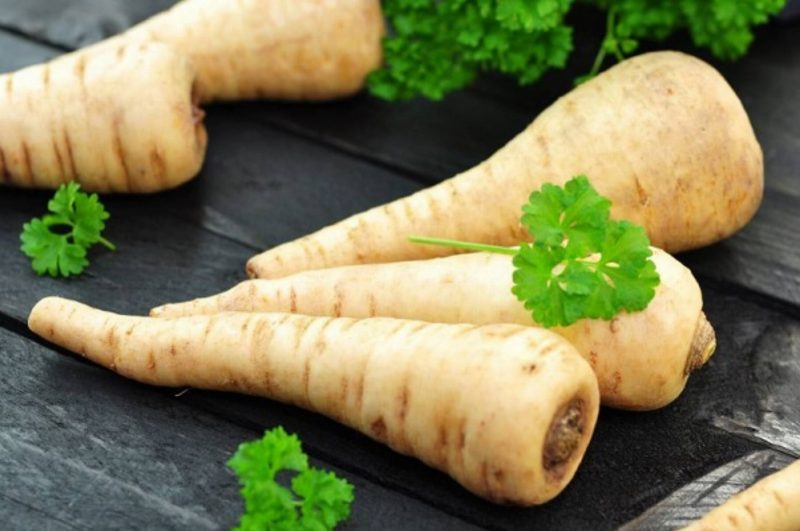
The first nitrogen dressing can be applied immediately after thinning, and then use fertilizers with phosphorus and potassium. Top dressing is carried out 3 or 4 times per season. Phosphorus-potash fertilizers improve the quality of the crop, root crops are better stored all winter.
Harvesting and storage
Parsnips are harvested in September or October, before the first frost. Store root vegetables like carrots in a cool cellar or refrigerator.
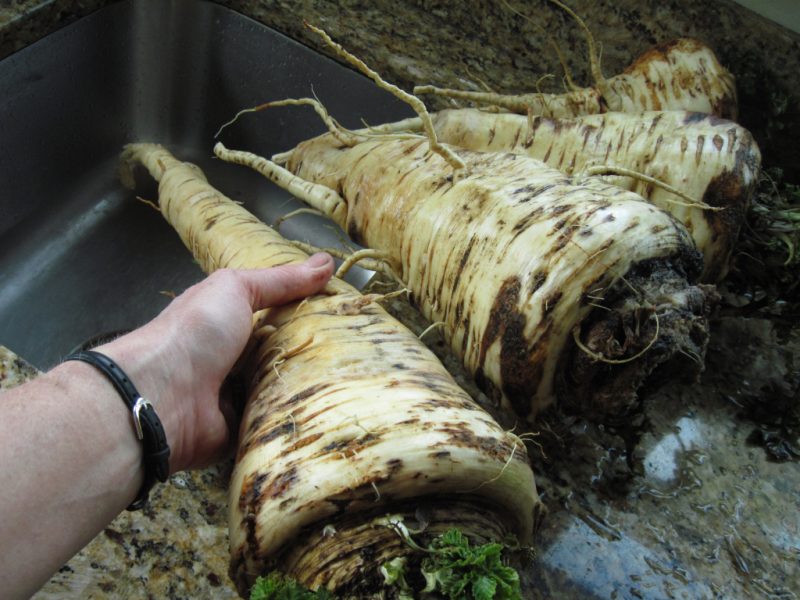
Parsnips can also be dried or frozen.
Dig a parsnip with a pitchfork, carefully so as not to damage. It is advisable to do this in dry weather. Before laying for storage, the tops of vegetables are cut off and the adherent soil is carefully cleaned.
Root crops left in the cold in the ground in the spring are suitable for food. They cut off the tops and insulate them with peat, sawdust or coniferous spruce branches. Dig in the early spring before the appearance of young leaves.
Pest and Disease Control
The plant is more resistant to disease than carrots, but is affected by similar pests.

- It can be damaged by a carrot or celery fly. For prevention, sage can be planted next to the beds of parsnip.
- Aphids, field bugs or caraway moths sometimes inhabit the parsnip. To combat insects, the plant can be treated several times with Fitoverm or other insecticides.
- Under adverse conditions, the development of fungal diseases - powdery mildew, gray or white rot is possible. Heavily damaged plants are destroyed, the rest is treated with Bordeaux liquid, Fundazol or Topsin-M.
Timely weeding of weeds and compliance with cultivation agricultural techniques can reduce the risk of losing parsnip crops.












